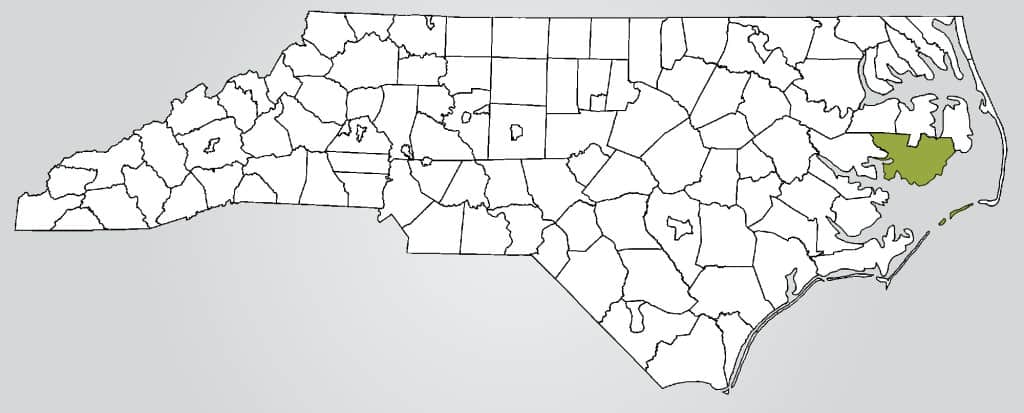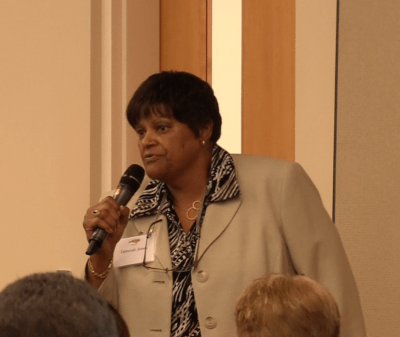In our review of schools that serve mostly low-income populations and received As in the first ever release of statewide A-F grades, we discovered that 11 of 17 of them were early college high schools. Of those that weren’t early or middle college high schools, five traditional public schools received As.
One, Jacket Academy at Carver High School, no longer exists. It was an academy within a larger school, and its population has been absorbed into the main population of the school. That leaves four schools. I was not able to arrange a visit to one of the schools, Beaver Dam Elementary, but I had a chance to travel to the other three.
Ocracoke School
This is the most unique of the three schools I visited. Ocracoke is an island on the Outer Banks of North Carolina. The only way on or off the island is via ferry. The year-round population of the island is about 950 people, and the population of the school is 161 students.

It’s Pre-K through 12th grade, so as you can imagine, the grade sizes are pretty small. According to principal Walt Padgett, the lower grades are double digits, but starting in about 8th grade, they start to drop down to the single digits. The senior class this past year was six students, and one graduated early.
The small grade sizes means a low student-teacher ratio. Padgett says in high school it’s about 8 to 1, but in the lower grades you can have ratios as high as 12 to 1.
Padgett attributes the school’s success to the class sizes, and the sense of community that living on Ocracoke inspires.
“Ocracoke School is a throwback to when I was in school. The late 50s, 60s, when the teacher was always right. When the principal and the coach was always right,” he said. “That’s the type of parents we have. And it helps, the fact that we know each other.”
It’s not unusual for teachers to see students and parents outside of class. So, parents are able to get regular, casual updates on how their kids are doing. If a kid doesn’t do his homework, it’s likely his mom or dad will hear about it later at the post office.
Also, because it’s so small, the teachers know basically every student at the school, no matter what grades they teach.
“You meet their parents, you know a lot about the children, you know their extended families,” said high school science teacher Jennifer Garrish. “Having been here over 30 years personally, I know a lot of details about the people. Probably more than I want to know.”
Garrish has taught at the school for 21 years and lived on the island since the mid-80s. And because she teaches multiple grades, she has a good handle on what the kids know and don’t know, so when they start with her in a new grade, she knows what she needs to do to get them up to speed.
Dr. Todd Blumenreich, director of Curriculum and Instruction, Career and Technical Education, and Testing and Accountability for Hyde County, calls the Ocracoke School the most unique he’s ever seen.
“I don’t place much stock in cliche, but that it takes a village to raise a child is so true here,” he said. “Everybody truly believes that the instruction of all the kids is everybody’s business.”
The close relationships fostered between students, teachers and parents can be more important than “structures, systems and programs,” he says.
Talking to a few of the students from the school, you hear the same thing.
“I really like school here. The teacher to student ratio is really low, so you get a lot of one-on-one time with your teacher,” said senior Katie O’Neal. “They’re really there for you if you need them. And that really helps a lot when you’re trying to learn a new topic.”
The population of the school is predominantly white with about 37 percent Hispanic, Padgett said. Worries over low performance in education often revolve around minority populations, but Padgett says the Hispanic students have no problems at his school.
“[B]ecause their parents expect them to do well,” he said. “And that’s the difference, that’s the thing about a small community. There’s that open line of communication and you have to have it to be successful.”
The Ocracoke School is truly one-of-a-kind.
It’s a small school on a small island that is part of the second smallest local education agency in the state.
Ivey Belch, pastor at the Assembly of God Church on Ocracoke, attended the school when he was a student and now has three kids that are following in his footsteps.
He points out that the teachers on Ocracoke are high caliber. But many schools have high-caliber teachers. It’s the size of the school that makes all the difference.
“You might find those teachers, but they’re going to have 30 to 40 kids, and they can’t put that experience that they have towards the kids plus the time,” he said.
Ocracoke is yet another outlier in our A-F grading investigation. It’s a good school with good teachers and a good administration, but what it accomplishes cannot be duplicated. It is unique to the place.
As you will see as our journey continues, this is a theme we found over and over again.
The Map: School Report Cards
Monday: A-F Grades: Why early college high schools succeed
Tuesday: Ocracoke School: An education like no other
Wednesday: Rutherford College Elementary: Another community school
Wednesday: Riverbend Elementary School: Excellence and intimacy
Thursday: Henderson Collegiate: A school built on idealism
Friday: Why do some schools serving low-income populations get As?



